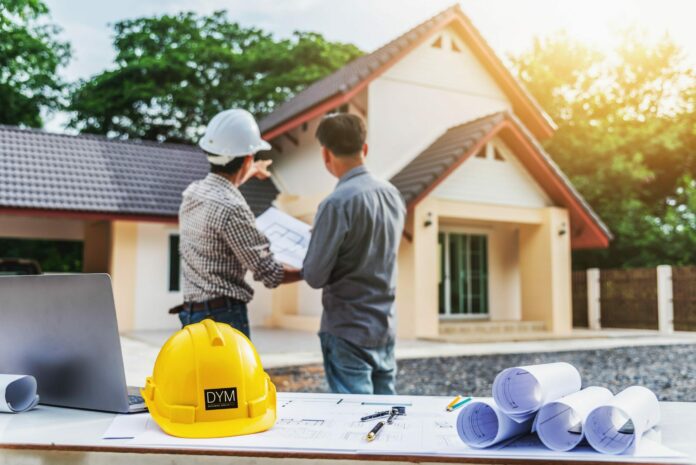When it comes to construction projects, the design-build method is gaining popularity for its ability to streamline processes and deliver efficient results. Whether you’re planning a home renovation or a large-scale commercial project, the design-build approach offers a seamless integration of design and construction, all managed under one contract. This method is known for reducing costs, speeding up timelines, and minimizing potential risks, making it an attractive option for many.
In this guide, we’ll walk you through everything you need to know about the design-build process, from its benefits to choosing the right team, so you can approach your project with confidence.
What is Design-Build?
The design-build process is a project delivery method where a single entity—often referred to as a design build firm—handles both the design and construction phases of a project. Unlike the traditional design-bid-build model, where the design and construction are managed separately, design-build encourages collaboration from the very beginning.
This approach allows for continuous communication between the design and construction teams, resulting in a more efficient and cohesive project. It’s a method that has proven successful across various sectors, from residential projects to commercial developments.
For those considering this approach, working with an experienced design build firm can ensure that both the design and construction phases are executed smoothly.
Benefits of the Design-Build Approach
- Single Point of Responsibility: One of the primary advantages of design-build is that it consolidates responsibility into a single entity. This means you won’t need to manage multiple contracts or coordinate between different parties. Instead, your design build firm will handle everything from conceptualization to completion.
- Cost Savings: With the design-build method, cost efficiency is achieved through early collaboration between the design and construction teams. By involving builders in the design phase, potential issues can be identified and addressed before construction begins, reducing the likelihood of costly changes later on. The design-build approach also helps prevent the budget overruns that are common in traditional project delivery methods.
- Faster Project Completion: The design-build process often allows for phases to overlap. For example, while final design details are still being completed, certain aspects of construction can begin. This parallel processing significantly shortens the overall timeline of the project, allowing you to enjoy the finished product sooner.
- Collaboration and Innovation: The design-build approach fosters a collaborative environment, where architects, engineers, and contractors work together to find innovative solutions that meet the client’s needs. This synergy often results in more creative and effective design solutions.
The Design-Build Process
Understanding the steps involved in the design-build process can help you navigate your project effectively. Here’s an overview of the key phases:
- Initial Consultation and Planning:
- The process begins with an initial consultation where the design build firm discusses your project goals, budget, and timeline. This phase is crucial for setting the foundation for a successful project.
- A preliminary plan is developed, outlining the scope of work and providing an initial cost estimate. This plan serves as the roadmap for the design and construction phases.
- Design Phase:
- During the design phase, architects and designers work closely with the construction team to create detailed plans that align with your vision and budget. This phase involves everything from conceptual designs to engineering specifications.
- By involving builders early on, potential challenges are identified and resolved before construction begins, ensuring that the design is both feasible and cost-effective.
- Construction Phase:
- With the design finalized, construction begins. One of the key advantages of design-build is that certain construction tasks can start while final design elements are still being completed. This overlapping of phases speeds up the project timeline.
- The design build firm manages all aspects of construction, including scheduling, coordination with subcontractors, and quality control. Regular updates keep you informed of progress and any adjustments needed.
- Project Completion:
- As construction nears completion, the design-build team conducts inspections to ensure that all work meets the agreed-upon specifications and quality standards. Any final adjustments are made to ensure your satisfaction.
- A final walkthrough with the client ensures that all details are addressed, and any punch list items are completed before the project is officially closed out.
Choosing the Right Design-Build Firm
Selecting the right design build firm is crucial to the success of your project. Here are some tips for making the right choice:
- Experience and Expertise: Look for a firm with a strong track record in projects similar to yours. Their experience will be invaluable in navigating any challenges that arise during the project.
- Communication and Collaboration: Effective communication is key to a successful design-build project. Choose a firm that values your input and keeps you informed at every stage of the process.
- References and Reviews: Check references and online reviews to gauge the reputation of the firm. Positive feedback from past clients is a strong indicator of a trustworthy and reliable team.
Real-World Examples
The design-build approach has been successfully implemented in a wide range of projects. From residential remodels to commercial developments, design-build firms have delivered exceptional results by combining creativity with practical construction knowledge. For inspiration, consider looking into case studies or reaching out to a reputable design build firm for examples of their work.
Conclusion
The design-build process offers a streamlined, efficient, and collaborative approach to construction projects. By integrating design and construction under one contract, this method saves time, reduces costs, and ensures a smoother experience from start to finish. If you’re planning a construction project, consider the benefits of design-build and choose a firm that aligns with your vision.

